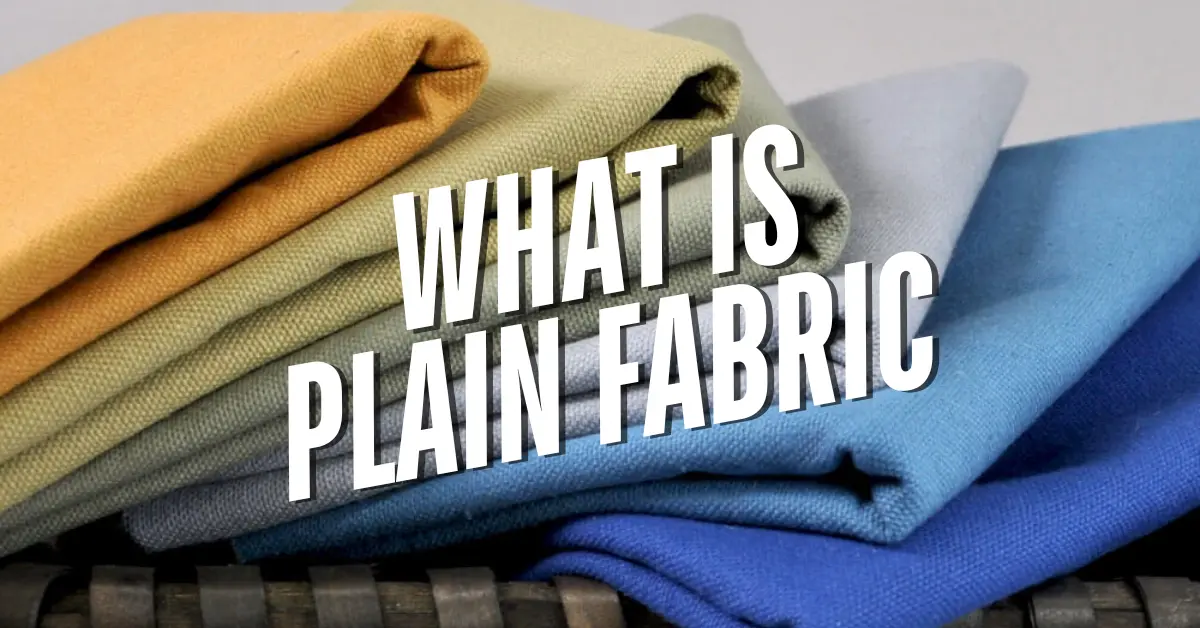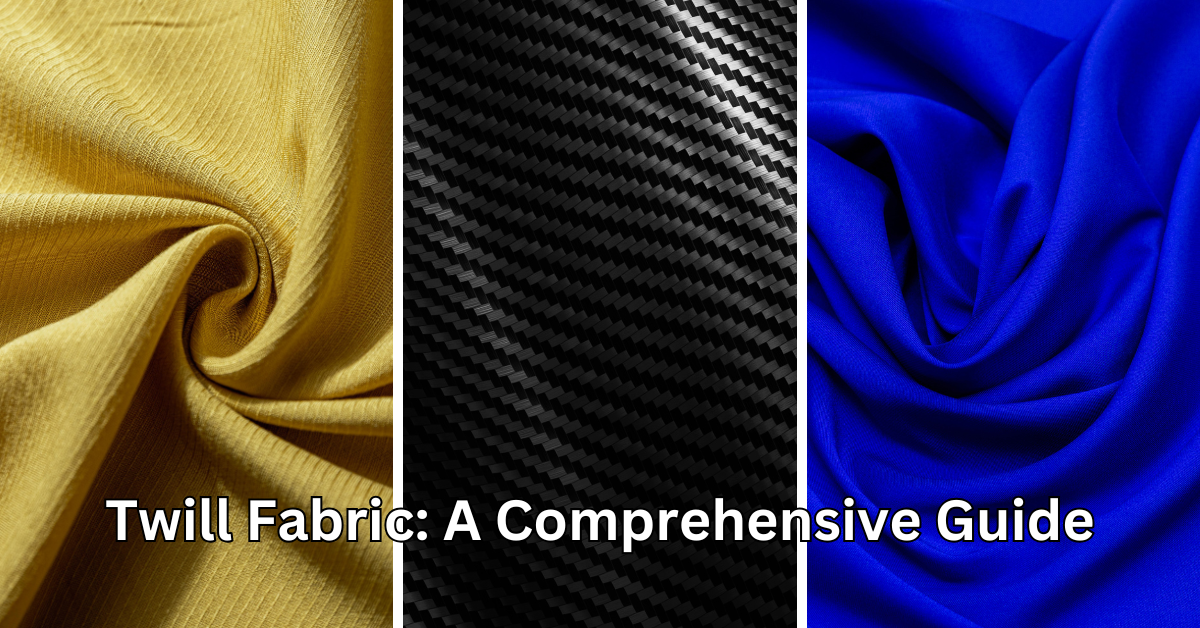As a textile engineer with years of experience in fabric development and apparel manufacturing, I’ve seen how Chief Value Cotton (CVC) fabric has become a staple in the garment industry. CVC is a cotton-rich blend, generally composed of more than 50% cotton and the rest polyester. This fabric combines comfort and strength, making it suitable for everyday clothing, uniforms, and activewear.
In this article, I’ll break down the different types of CVC fabric, how they’re used, and why manufacturers often choose them over other blends.
What Is CVC Fabric?
CVC stands for Chief Value Cotton. This fabric blend is designed to maximize cotton content while still taking advantage of polyester’s durability and cost-effectiveness. Typically, CVC blends range from 60/40 to 80/20 in cotton-to-polyester ratios.
Key Features:
- Breathable and soft due to the high cotton content.
- Strong and wrinkle-resistant, thanks to polyester.
- Easy to dye and finish during processing.
- Affordable compared to 100% cotton fabrics.
Common Types of CVC Fabric
There are several types of CVC fabric based on blend ratio. Each one serves a slightly different purpose in garment manufacturing.
60% Cotton / 40% Polyester
This is the most commonly used type of CVC fabric. It offers a good balance between comfort and longevity. Many t-shirts, polo shirts, and basic apparel items are made with this blend.
Use Case:
Popular in casual fashion and mass-market apparel due to its cost-efficiency and reliable performance.
65% Cotton / 35% Polyester
This blend provides slightly more comfort than the 60/40 version. It is commonly used in school uniforms, industrial workwear, and branded t-shirts.
Use Case:
Ideal for uniforms where regular washing and long-term use are expected.
80% Cotton / 20% Polyester
This version feels close to pure cotton. It maintains some polyester strength while giving a soft hand feel, making it ideal for fashion-focused garments.
Use Case:
Used in premium-quality shirts, lightweight hoodies, and retail garments requiring a high-end finish.
Specialized Variants of CVC Fabric
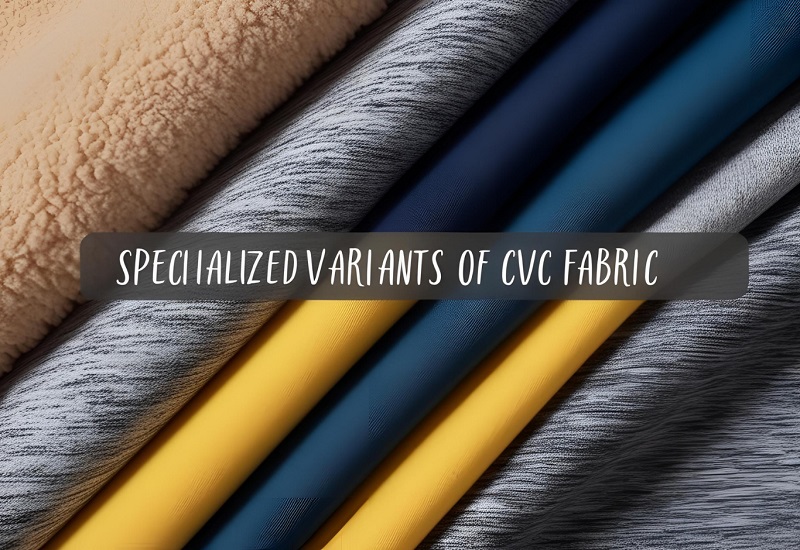
Besides the standard blends, other forms of CVC fabric types exist with special features for particular uses.
CVC Fleece
CVC fleece is made using a brushed process on the inside surface, providing extra softness and warmth. It’s thicker and warmer than regular CVC fabrics.
Use Case:
Used in winterwear like hoodies, sweatshirts, and warm-up jackets.
CVC with Spandex
Some CVC fabrics are mixed with a small percentage (3-5%) of spandex. This adds stretch and shape retention.
Use Case:
Ideal for activewear, gym wear, or fitted garments requiring mobility.
Heathered CVC
Heathered CVC fabrics are made using different colored yarns to create a marled look. These fabrics are soft, lightweight, and visually appealing.
Use Case:
Popular in retail t-shirts and modern casualwear with a textured look.
Applications of Different CVC Fabric Types
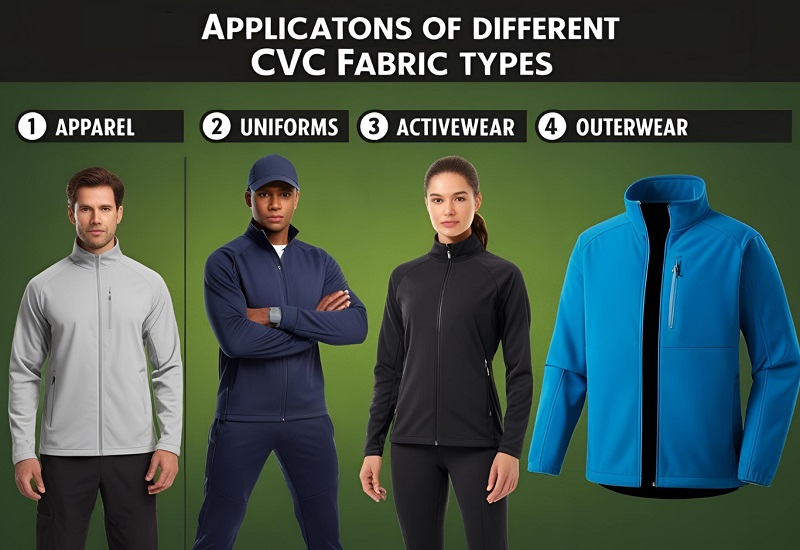
Each type of CVC fabric fits specific needs across industries.
Apparel
Most daily wear t-shirts, polos, and tops use CVC for its breathable and durable nature. Garment dyeing and screen printing work well on these fabrics.
Uniforms
CVC fabrics are often used for uniforms because they hold their shape, resist shrinking, and tolerate frequent washing. The 65/35 blend is common in this category.
Activewear
CVC blended with spandex suits gym and yoga clothing. It keeps the garment stretchable without becoming baggy after use.
Outerwear
CVC fleece fabrics are used in colder months for garments needing insulation but not bulk. They’re warm and soft against the skin.
Care Instructions for CVC Fabrics
Proper care extends the life of any fabric, and CVC is no exception.
Washing
- Use cold or warm water.
- Avoid high-temperature washing to prevent shrinkage and preserve shape.
Drying
- Tumble dry at low heat or air dry.
- Remove promptly to reduce wrinkling.
Ironing
- Use low to medium heat.
- A pressing cloth is recommended to avoid surface shine or scorching.
Why Choose CVC Over 100% Cotton or Polyester?
From a manufacturing perspective, types of CVC fabric offer the best of both fibers. Cotton provides softness, while polyester contributes strength and resistance to wear. Compared to 100% cotton, CVC shrinks less and costs less. Compared to 100% polyester, it breathes better and feels more natural.
This makes CVC ideal for brands looking to deliver reliable quality at competitive prices. It’s no surprise that this fabric is widely used across global textile markets.
Final Thoughts
Choosing the right fabric blend is crucial for the end use of a garment. The different types of CVC fabric—from basic 60/40 blends to stretch and fleece variants—offer flexibility across casual, active, and professional wear. As demand grows for garments that balance comfort and performance, CVC will remain a go-to solution in textile production.
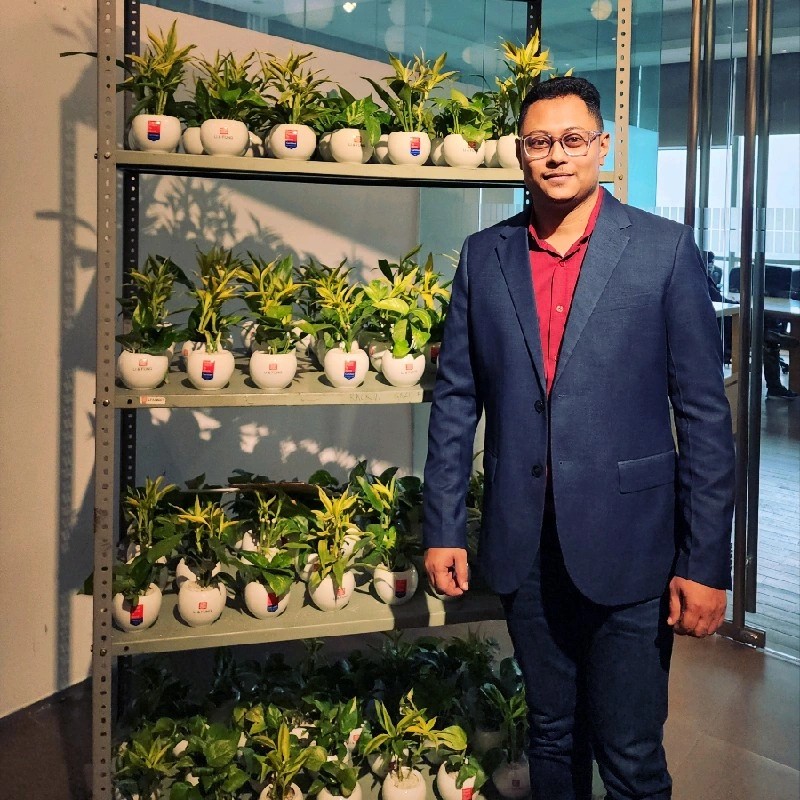
Manager – Fabric Technical and Sourcing/Product Development/ Sustainable Material Management.
I am a B.Sc .-educated Manager of Fabric Sourcing and Technology with extensive experience in the apparel and fashion industry. Passionate about trend analysis, fabric sourcing, and sustainable textile solutions, I thrive in fast-paced environments that demand innovation, adaptability, and leadership.
As a servant leader, I am committed to honesty, transparency, and continuous process improvement. My expertise spans fabric development, product quality management, and supply chain optimization, ensuring exceptional performance across all facets of sourcing and production.
Core Skills & Expertise
✔ Fabric Sourcing & Development – Specialized in regular and sustainable textiles (BCI, Organic, Recycled).✔ Trend Analysis – In-depth understanding of global fashion and fabric trends.✔ Product Development – Expertise in material innovation and process optimization.✔ Quality Management – Strong focus on process control, ensuring high-quality production.✔ Leadership & Problem-Solving – Solution-oriented approach to team management and decision-making.
Technical Proficiency
🖥 Software & Tools:▪ Microsoft Outlook, Excel, Word▪ PLM (Product Lifecycle Management)
🌱 Sustainable & Ethical Practices:▪ Better Cotton Initiative (BCI)▪ Organic & Recycled Fabric Management
Key Strengths
✅ Solution-Focused Leadership – Driving innovation and efficiency in fabric sourcing.✅ Quick Decision-Maker – Adapting to market shifts and production challenges.✅ Team Player with a Positive Attitude – Ensuring collaboration and productivity.✅ Strong Time Management – Meeting deadlines while maintaining quality.
Professional Achievements
🏆 Li & Fung GEM Award – Recognized for fabric sourcing and supply chain management excellence.🏆 Group CEO GEM Award – Honored for outstanding leadership and process innovation.
